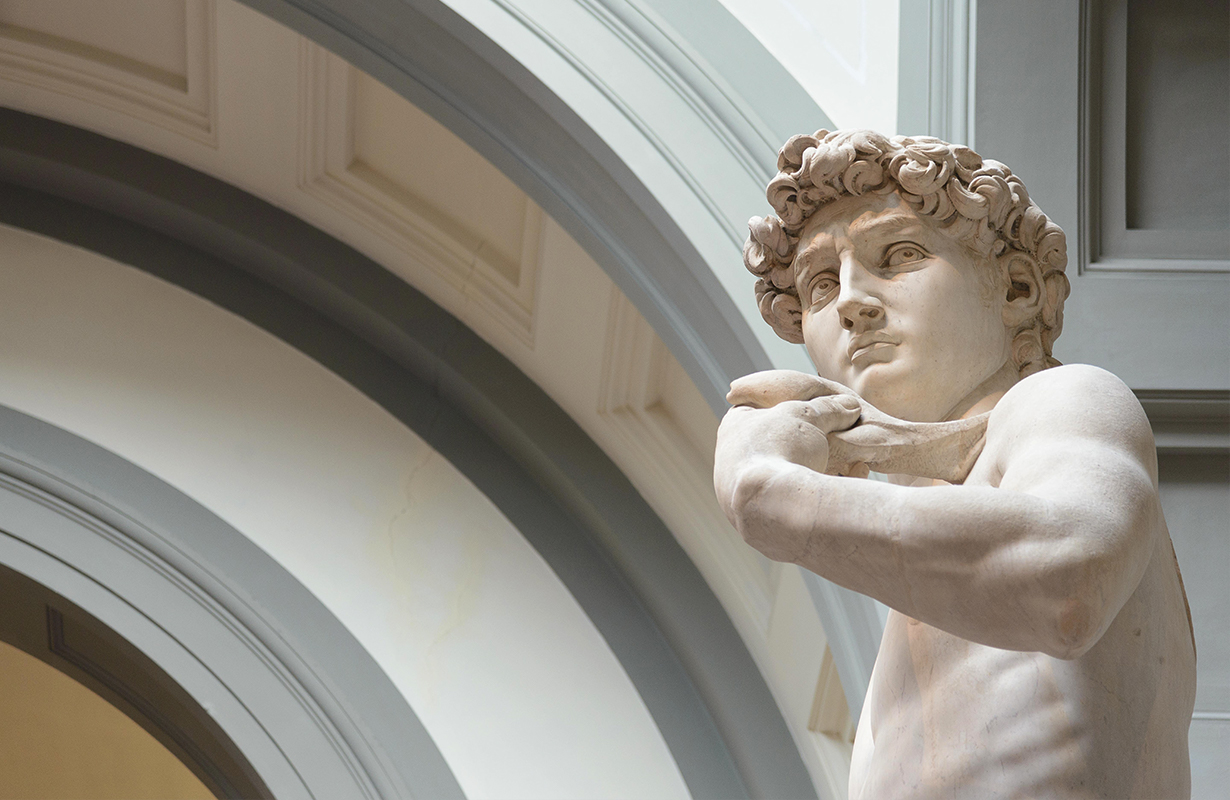Renaissance sculpture and painting were closely related, and Italian pictures owed some of their three-dimensional quality to the artists’ study of sculpture. The first Renaissance sculptor was Donatello (1386-1466), whose statue of the condottiere Gattamelata in Padua was even then a landmark in the history of art.
The subject is secular, the treatment classical. Donatello created the first statue of a nude male since antiquity, a bronze David who, however, looked more like a handsome youth than the inspired slayer of Goliath. Yet Donatello’s wooden statue of Mary Magdalene, all lank hair and skin and bones, was a saint who looked the part.
Still another gifted Florentine, Andrea del Verrocchio (1435-1488), extended the concern for social and political realism. His statue of the condottiere Colleoni in Venice, mounted on a muscular horse, is more dynamic than Donatello’s Gattamelata. Painter, goldsmith, teacher of Leonardo, and student of architecture, geometry, music, and philosophy, Verrocchio ranked among the universal men of the Renaissance. So did Benvenuto Cellini (1500-1571), goldsmith, engraver, devotee of high living, and author of a noted autobiography. Cellini boasted as patrons two popes as well as King Francis I of France and the Medici duke of Tuscany, who commissioned an elegant statue of Perseus (1553) holding aloft the head of Medusa.
Florence commissioned Michelangelo’s colossal statue of David, a muscular nude more than sixteen feet high, fashioned from an enormous block of marble abandoned by another sculptor. Michelangelo went on to carry sculpture to a summit it had not attained since the age of Pericles. He showed his ingenuity in solving technical problems with his Pieta (c. 1499), in St. Peter’s, which shows the Virgin mourning the dead Christ. It was exceedingly difficult to pose a seated woman with a limp adult body across her lap, yet Michelangelo succeeded triumphantly.

